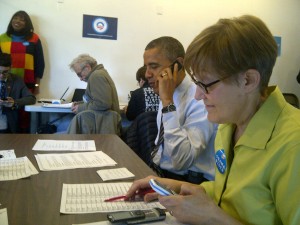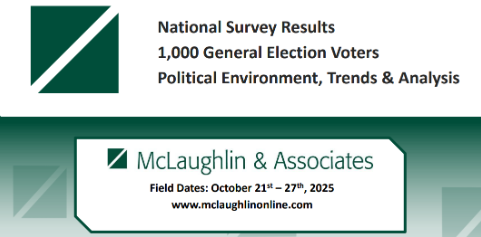Reaching voters by telephone is one of the least expensive forms of direct political marketing and intelligence gathering available, and has the best response rate. Whether via landline or cellphone, Voter ID and GOTV efforts enable campaigns of all sizes to effectively get their message across to the people they want most to reach.
An interview with John Connors, the Founder and President of Campaign Now, and Simon Lewis, its Director of Operations, who have conducted millions of phone calls over the last couple of election cycles.
1. First of all, John, do you like being contacted by telephone by a political campaign?
I do. I think it’s one of the most personalized, and most disruptive, of all marketing techniques, and needs to be utilized more often and more effectively by campaigns. It’s truly the only means of contact — other than a face-to-face visit — that provides accurate intelligence and a direct ability to interact in real time with a majority of voters.
2. In this age of online everything, is phone canvassing still important for a candidate and campaign?
Yes. It’s even more important because online advertising, TV advertising, and other means of marketing communicate your campaign’s message to voters. A telephone call from your campaign will reinforce AND verify that message and the tactics you are using to reach voters. Telephone contact also delivers the highest response rate of any form of direct marketing. It’s a must for any campaign budget.
3. Are there essential first steps a campaign should take before starting to contact voters by telephone?
Absolutely. In order to make sure your campaign is as effective as possible, you need to have a well-thought-out plan in place before beginning the calls. You must determine the universe of voters to target, plan a timeline to complete both voter ID and GOTV calls, and you must have a plan of action for the call results. By ensuring you have a detailed plan, you avoid the pitfalls of contacting the wrong individuals or ending up with ineffectual data, both of which waste valuable time and money during a time-sensitive campaign.
There are 4 essential steps to any phone survey or GOTV campaign:
• Preparing and acquiring both landline and cellphone data. Determine what data you need and acquire the data that targets the voters you need to reach.
• Determining the timeframes for conducting and reporting survey calls. Based on your universe size, determine the length of time it will take to complete the survey calls and to report the results.
• Conducting GOTV calls to the targeted universe determined by the survey calls. Use the voter ID results to define a smaller universe to target with GOTV calls, and determine the timeframe for conducting these calls and reports.
• Finding the technology and manpower necessary to complete the calls. Given your defined timeframes and universe sizes, decide how much manpower and how many labor hours your campaign will need in order to complete the call campaign.
4. How do most campaigns get the necessary number of survey and GOTV calls completed before the elections?
Most well-run campaigns utilize a mixture of volunteer manpower and paid callers to make the phone calling happen. In fact, most campaigns don’t experience a wave of volunteers until 30 days prior to the election.
We recommend starting with volunteer-driven calls using some of the most efficient technology available, like a remote VOIP or in-office VOIP system. We also recommend trying automated telephone surveys for landline-only households of voters who are already solidly identified as your supporters. Save the really important audience, like known moderates or independents, for your live-call universe conducted by your volunteers and your paid, live phone callers.
5. Current laws put pretty tight limits on phone surveys. How can a campaign work best within them?
The most important factors affecting phone campaigns are the types of technologies used and the times of day the campaign is run. Although laws vary by state, the most common rules for live phone calling is that calls cannot be conducted prior to 9:00 a.m. or after 9:00 p.m. For automated calls, the same time period limitations exist, with the additional caveat that cellphones cannot be called by a message that originates automatically. This rule effectively eliminates your ability to contact cellphones using an automated call. If you’re interested in laws specific to your state or jurisdiction, feel free to give us a call.
6. What would you consider to be the essential features of a good phone call system for political campaigns?
We do not recommend using a predictive or automated dialer for your volunteer calls. In fact, we recommend using a general VOIP dialer like Victory VOIP that delivers a quality connection from your passionate volunteer to the voter you are trying to reach. Systems like the Victory VOIP headquarters unit for campaigns allow for volunteers to track call responses, and their call production and be rewarded for it. The Victory system also allows for customized volunteer voicemails that can be left on answering machines at the press of a button.
When you have volunteers calling, it’s not about volume, it’s about letting the passion and excitement of your team and environment resonate in a quality way with the voter.
7. John, did you ever take part in cold-calling for a political campaign? Care to share some of your favorite moments?
Yes, that’s how I got started in the industry of direct marketing to voters. In fact, I remember hooking up one of the first Victory VOIP phone units ever made at my college house nearly a decade ago at Marquette University, and having friends over to make calls. Back then, the incentive for my friends to make was a can (or two) of Natural Light, but we recommend most campaigns keep volunteers fed with pizza and soda.
9. Cold-calling voters is not easy. Any words of advice for a campaign as it prepares to launch one?
The most effective way for a campaign to begin conducting a cold-call campaign is to have a strong, effective message to deliver and a goal in mind. Good messaging will go a long way in capturing and holding your audience’s attention throughout the call, and will drive them to take action after they get off the phone. A good message will call your audience to action and stay with them after they hang up the phone.
10. How about for the brave volunteers at the phones?
Thank you for doing what you do — it’s a hard job. I know some volunteers who nearly live at the campaign offices for the last few months of the election season. Don’t be afraid to provide your campaign manager or headquarters’ manager feedback from what you’re hearing about responses on the calls. Stay strong and just know that you are on the front lines of making a difference for your community, state, and country. Thank you.
Is your campaign planning a telephone survey or GOTV campaign? We’d like to hear about your experience, and we’re here to help with any questions, problems or equipment needs you might have. Click here to contact us today.



.png)

